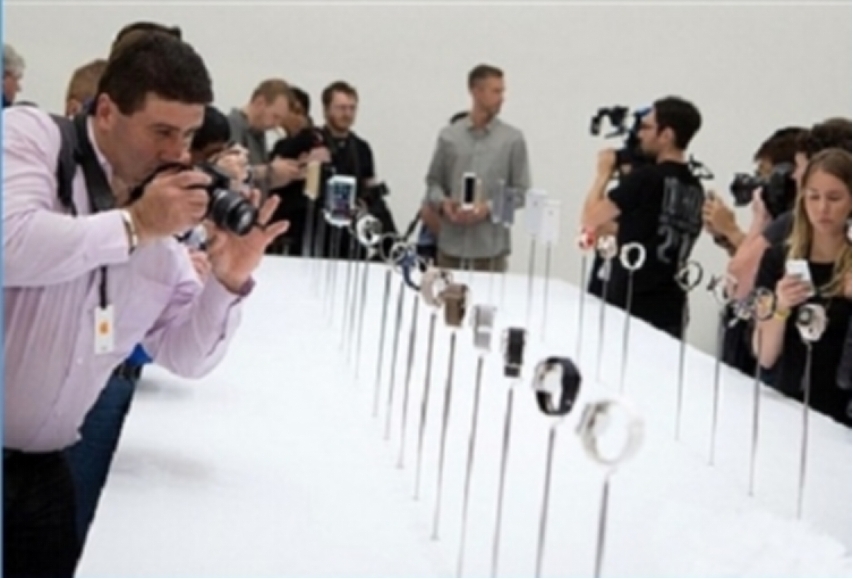
Wear OS is increasingly competing with Apple Watch in the smartwatch market, and while Google has made significant efforts on multiple fronts, there are still many technical gaps, especially in terms of software integration, user experience, and ecosystem unity. This article will analyze the gap between Wear OS and Apple Watch from a technical and technical perspective, focusing on some technical features of Apple Watch that have not been effectively replicated or improved in the current Wear OS. Although Wear OS has made progress in some areas, these flaws expose the imperfections of its technical architecture and reveal fundamental problems with the integration of hardware and software in the Android ecosystem.
First of all, Wear OS has a particularly significant disadvantage in health data management. Currently, Google's smartwatches such as the Pixel Watch 3 and Samsung's Galaxy Watch Ultra rely on independent third-party health apps - such as Fitbit and Samsung Health. This approach not only adds complexity to the user's setup, but also splits the management of health data between different brands of devices. In contrast, the Apple Watch presents all health data in one place through a unified Fitness app, whether it's steps, calories burned, or sleep quality, and users can quickly see everything through a single app. This approach not only simplifies the user experience, but also realizes the seamless synchronization and integration of data, and from a technical point of view, Apple's approach is undoubtedly a step ahead in the health management of smart watches. Google failed to provide a similar unified health data management solution in Wear OS, causing users to frequently switch between different health applications during use, affecting the overall use fluency and data consistency.
Secondly, regarding the exercise goal management of smartwatches, the functions currently provided by Wear OS are too basic and lack flexibility. Although Wear OS supports a variety of exercise types and related data tracking, there are serious limitations in the adjustment of exercise goals. Once a user sets a goal, it cannot be dynamically adjusted according to the actual situation of the day. For example, on some days, the user may not be able to exercise due to work or recovery needs, but the exercise goal remains static, and once the goal is missed, the winning streak will be broken, increasing the psychological burden of use. Apple Watch introduces the function of dynamically adjusting exercise goals, so that users can flexibly adjust their goals according to the situation of the day, and even pause the goal to avoid breaking the winning record because of the failure to complete the exercise on a certain day. This design is not only thoughtful from the perspective of user psychology, but also enhances the overall user experience. The lack of this feature in Wear OS not only limits user flexibility, but also makes it inferior to the Apple Watch in terms of personalized health management.
Look at the walkie-talkie function, which is not necessary in the application of smart watches, but its unique social attributes and convenience can not be ignored. The Apple Watch's Walkie-Talkie feature allows users to send instant voice messages over the Internet, similar to the functionality of a traditional walkie-talkie, which is especially useful in emergency or noisy environments. This feature is not only entertaining and useful, but also enhances the social interactive nature of the device. In Wear OS, voice communication is possible through other communication applications, but there is no similar, directly integrated walkie-talkie function. Google did not include this feature in its smartwatch, which means that its devices are relatively weak in communication in some scenarios. For smart watches, integrating instant messaging and walkie-talkie functions is undoubtedly an important link to enhance user stickiness and increase the diversity of devices.
Next, we discuss the complexity of the device pairing process. Although Google offers Fast Pair technology that makes pairing with Wear OS devices faster, the pairing process is still cumbersome compared to the Apple Watch. Apple Watch pairing can be done only through the iPhone and Watch apps, and the process is simple and efficient. At the same time, pairing of Wear OS devices often requires users to download apps from specific brands, such as Samsung Health, Fitbit and others. This brand segregation makes the Wear OS device experience significantly compromised when used across brands. Especially when switching between different brands, users need to re-do complex setup and synchronization, which makes Wear OS particularly weak in terms of device interoperability. Apple's Watch application has achieved unified pairing and synchronization within the ecosystem, and Google urgently needs to learn from this practice to launch a unified companion application that can cover all Wear OS devices, simplifying the pairing and synchronization process, so as to improve the user's operation convenience and overall experience.
Finally, Wear OS's problems with software updates continue to plague users. While Android has achieved a degree of update integration on smartphones, Wear OS has not achieved the same consistency and timeliness of updates. For Apple Watch, all compatible devices receive the latest system update at the same time, which not only improves the security and stability of the device, but also guarantees that all users can experience the latest features. In Wear OS, updates are often released in batches due to brand and hardware differences, and it can take months for some devices to receive the latest version of the system. This fragmented update strategy not only increases uncertainty in the security and performance of devices, but also leads to differences in experience between users of different devices. For a mature smartwatch system, the seamless push of software updates is a basic requirement to ensure system stability and improve user experience.
Overall, although Wear OS has made some progress in terms of fitness tracking, smart features and compatibility with third-party apps, there is still a clear technology gap when compared to the Apple Watch. From the unity of the ecosystem to the smoothness of the user experience to the process of updating and pairing devices, Wear OS has failed to address its inherent fragmentation. Apple Watch, with its well-designed unified platform, seamless system updates, and more in line with user needs, still holds a technological advantage in the smartwatch field. For Google, learning from Apple's successful experience in the deep integration of hardware and software to improve the overall consistency and user experience of Wear OS will be the key to future development.

The European Commission released a package of measures for the automotive industry on Tuesday (December 16th), proposing to relax the requirements related to the "ban on the sale of fuel vehicles" by 2035.
The European Commission released a package of measures for …
Venezuela's Vice President and Oil Minister Rodriguez said …
On December 16 local time, the Ministry of Space Science Ex…
Recently, a highly anticipated phone call between the defen…
Right now, the world's major central banks are standing at …
Recently, according to Xinhua News Agency, the news of a tr…